Light It Up
The Latest High-Powered Projectors Illuminate the Way for Mapping
High in the atmosphere over the Northern Hemisphere, the swirling, glowing natural light display known as the aurora borealis has wowed people for millennia. The mesmerizing show is considered one of the Seven Natural Wonders of the World.
Not to be outdone, a down-under display of man-made light known as Vivid Sydney has become the largest display of light in the Southern Hemisphere—aside from that part of the globe’s aurora australis, or the natural light display known as the Southern Lights. Vivid Sydney has been captivating millions of visitors to Australia’s largest city every June for the past decade.
The visionaries behind Vivid Sydney, a month-long celebration of light, music, and creativity, use projection mapping technology to stage “living art installations” that bathe structures around the city in bright, ethereal colors and animation.
“You’ve got thousands of people all milling around [every night], taking photos for Instagram and Facebook and everything,” said Richard Marples, global sales enablement director in Barco’s entertainment division. “All over the city they place various projectors and map onto different buildings.”
[A How-To Guide to Projection Mapping]
The centerpiece art installation at Vivid Sydney is at the Sydney Opera House, the city’s most famous building. Light from 15 Barco projectors travels more than a quarter-mile from the ferry terminal across Sydney Harbor to bring the Sydney Opera House to life with dazzling content.
“They have moving content on the roof [of the opera house] every evening for a month, and the number of people it draws to the harbor area in Sydney is incredible,” Marples said. “It really is incredible to see a building like that illuminated in that way.”
A daily selection of the top stories for AV integrators, resellers and consultants. Sign up below.
The advent of projection mapping in AV has not only enabled integrators and their clients to communicate in new ways, but it has helped redefine creativity in the industry. When anything can be a canvas for expression, everything is fair game.
“I think the reason projection mapping is becoming so popular is because people have seen that it does create a draw to a destination,” said Marples. “It’s a proven recipe for increasing visitor numbers and driving hotel bookings and restaurant sales.”
Scroll through the gallery below to see the latest projectors for large-scale projection mapping.
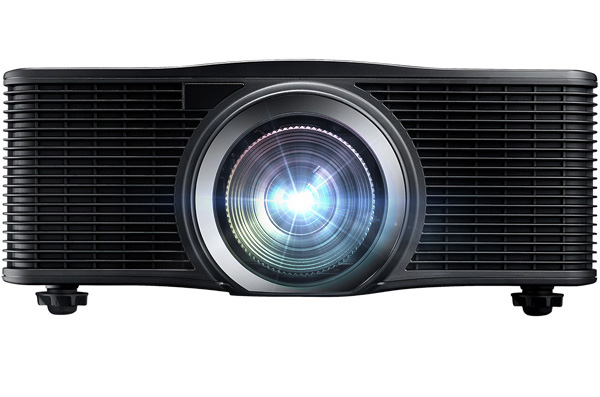
Optoma ZU1050
Optoma’s ZU1050 laser projector features motorized lens shift, zoom, and focus with 360-degree and portrait operation—plus 10,000 lumens of brightness.
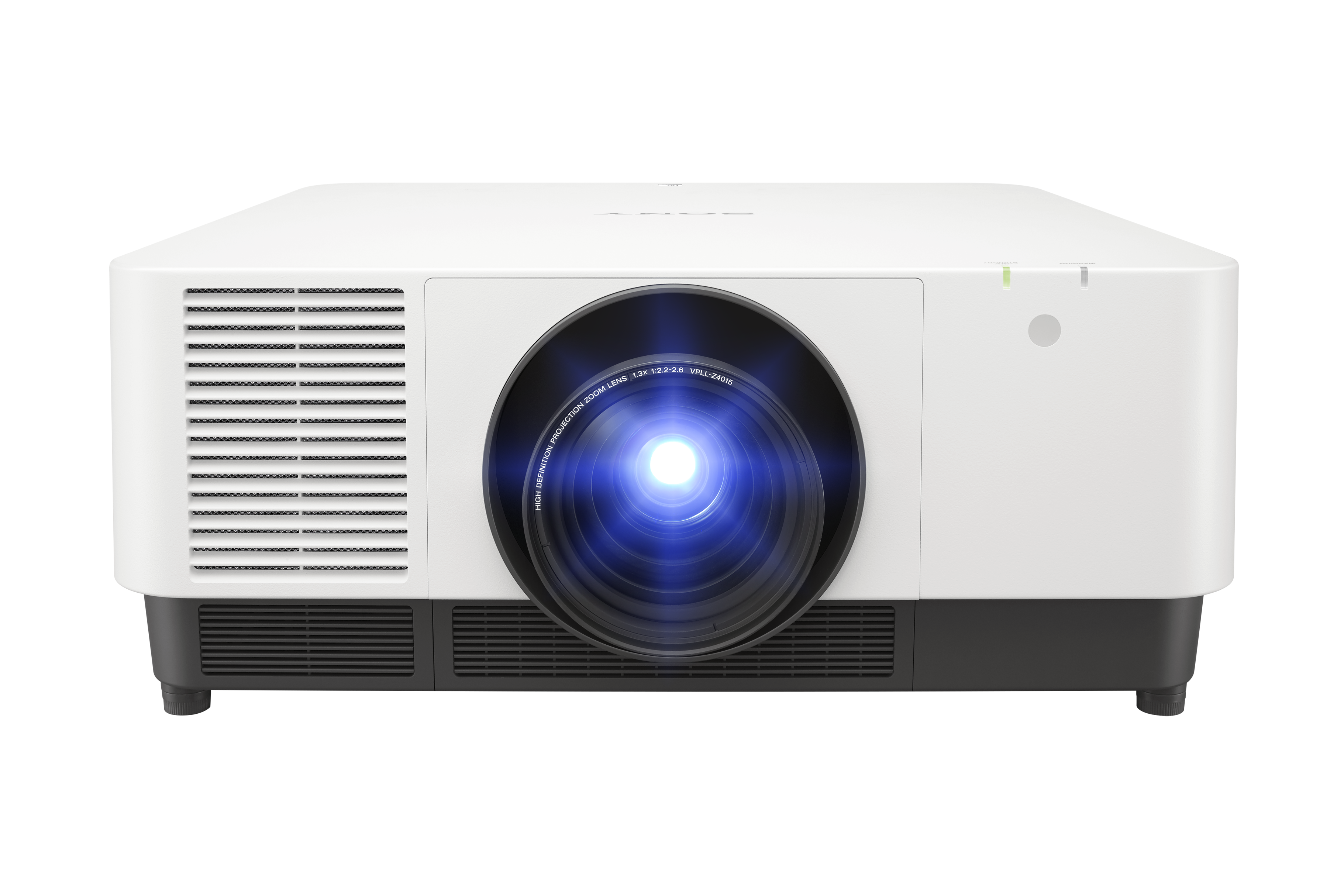
Sony VPL-FHZ90L
Sony’s 9,000-lumen VPL-FHZ90L projector has normal and wide lens shift, quick startup, and instant recall of up to six settings for size, position, and aspect ratio.
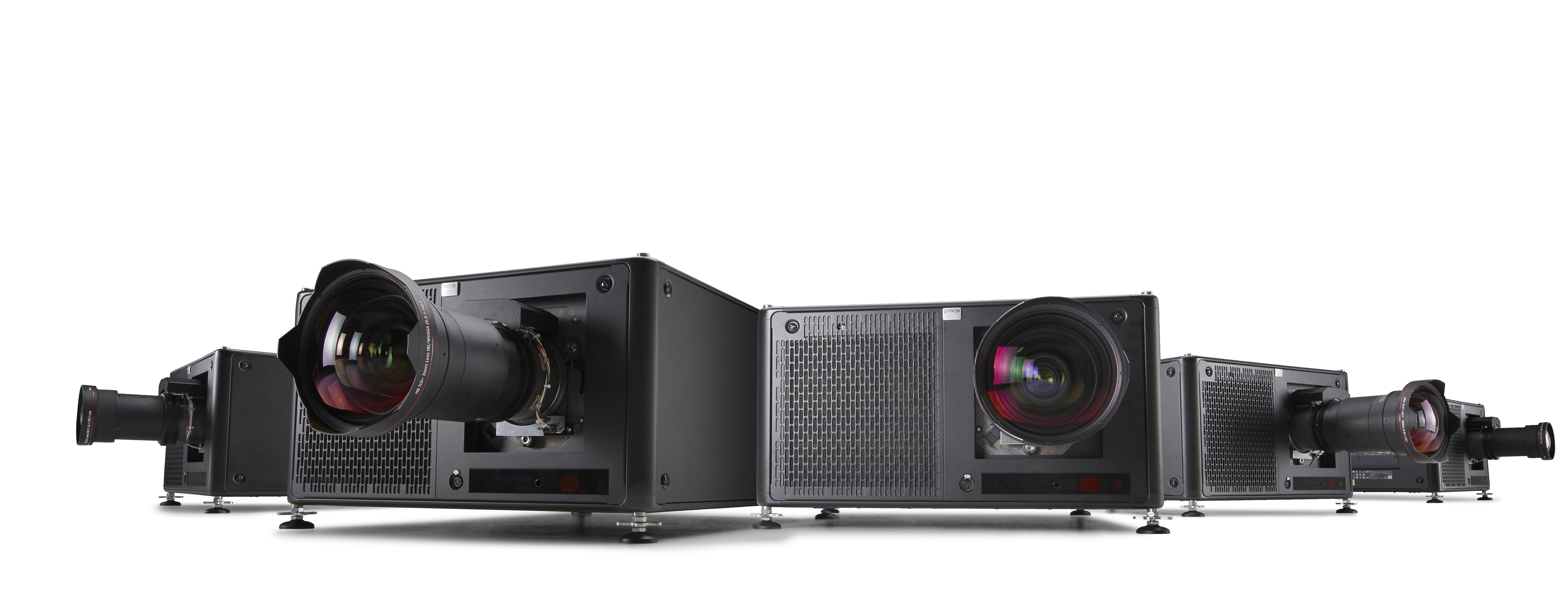
Barco UDX-4K40
Barco’s UDX-4K40 three-chip DLP laser phosphor projector offers a wide color spectrum and brightness up to 37,500 lumens.
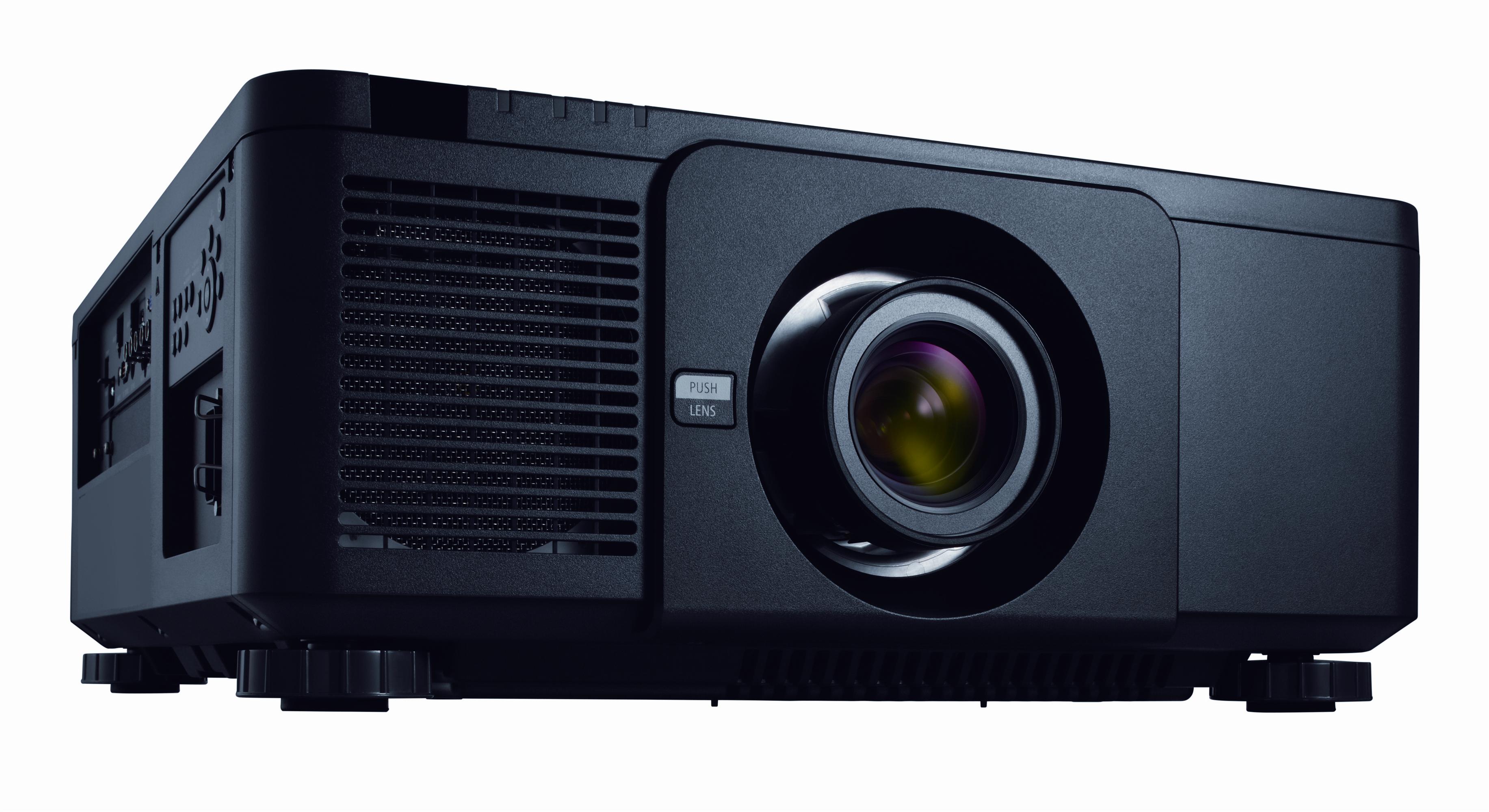
NEC Display NP-PX1004UL
NEC Display’s NP-PX1004UL laser projector has eight bayonet-style lenses that enable quick and easy lens exchange, a DLP engine that delivers high-contrast images, and 10,000 lumens of brightness.
Drawing from its experiences in the cinema industry, Barco has focused on developing laser projectors, like the 60 UDX models in use at Vivid Sydney, with dependability in color spectrum and longevity. Marples explained that the two features are related. “We spent a lot of time and effort making sure we understood how lasers operate over their lifetime, how to get the color points correct, and how to get a very long lifetime out of these lasers,” he said. “You have to make sure that lasers are cooled correctly, otherwise you just don’t get the lifetime or the performance out of them.”
Barco’s UDX laser phosphor projectors—also used during the 50th anniversary celebration of the Apollo 11 mission to the moon that took place at the Washington Monument in Washington, D.C., in July—benefit primarily from high-brightness projection. The Barco UDX-W22, with a wide-view WUXGA (1920 x 1200) resolution, has a brightness of 21,000 lumens, while the UDX-4K models have a 4K UHD (3840 x 2400) resolution and brightness all the way up to 37,500 lumens.
“Having that kind of power available in such a small, compact, and integrated box cooling everything inside—it can take care of itself in all kinds of conditions,” said Marples. “That really has enabled users to maximize their creativity in how they set the projectors up and then use them in these different projection mapping events.”
The Optoma ZU1050 projector’s motorized lens shift, 10,000 lumens of brightness, 2,000,000:1 contrast ratio, and 0.36:1 to 5.5:1 throw ratio range make it a prime candidate for inventive applications like the three-day Electric Daisy Carnival (EDC) light and music festival in Las Vegas.
[Transformations: LUMA Festival Projects a New Vision of Public Art]
At the 2018 edition of EDC, which drew 150,000 attendees each day, the projector was a key element in an art installation on a 1940s-vintage B-25 Mitchell bomber plane, which had been found in the desert and restored for the event. A complement of Optoma ZU1050 and ZU850 models installed on projection platforms projected morphing light displays on the plane’s body and surface, creating the illusion of the plane descending from the clouds.
“Despite the surrounding ambient light, the high brightness of the Optoma ZU1050 and ZU850 projectors allowed the colors of the visual content to show through richly,” said Brian Soto, head of product management at Optoma.
“The wide range in lens shift, zoom, and focus with 360-degree and portrait operation allowed the light display to reach unconventional areas of the plane, and the projectors’ ability to turn off without the usual long cool-down time made switching out the lenses and making tweaks fast and efficient.”
[Turning Heads with Projection Mapping]
Although ambient light isn’t much of an issue in the gallery where the Tyrannosaurus rex fossil nicknamed Sue resides at the Field Museum in Chicago, having a projector that can execute sharply contrasted areas of light and dark has been crucial.
Ceiling-mounted NEC NP-PX1004UL projectors mapped onto the dinosaur’s skeleton illuminate specific sections, such as the jawbone or individual ribs, without bleeding light onto neighboring bones or surfaces. The projection covering the skeletal structure is one large image split into multiple sections of light and dark that changes as the program runs through its cycle.
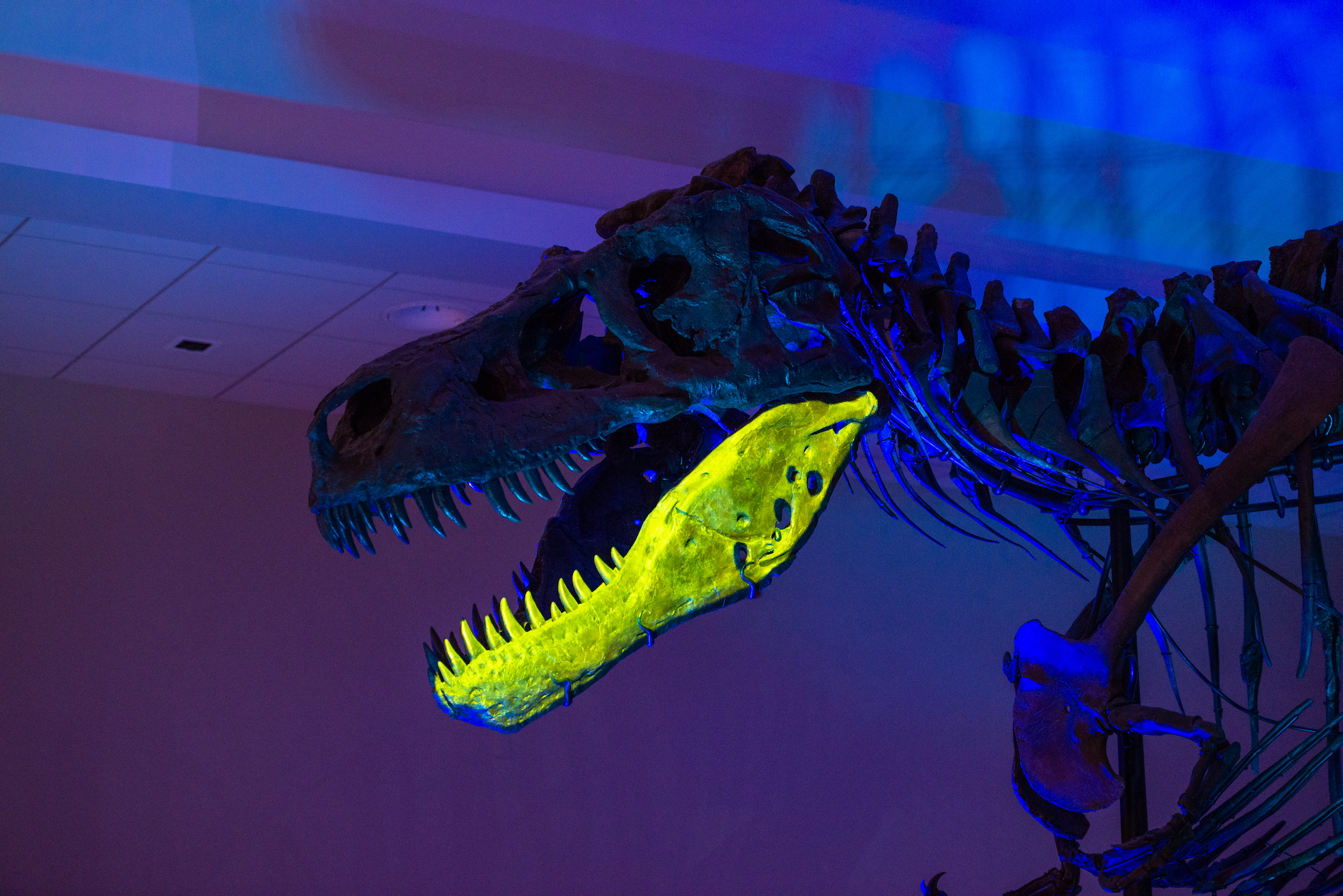
“It’s a DLP engine, so the background pixels that aren’t being used are not that bright,” said Richard McPherson, senior product manager, NEC Display. “That keeps it very dark outside the space you’re actually mapping. With LCDs, [you would] have a much higher brightness point at the black level.”
Ensuring the best image quality is the most important part of projection mapping. Sony’s VPL-FHZ90L projector specializes in articulate reproduction in both indoor applications and outdoor uses, such as the SUNY Cortland Sesquicentennial Celebration, during which historical images, archival video, and other content was projected onto a central building on campus.
“It was a night event. They used a [Sony] 9,000-lumen projector, and it really looked great,” said Yoshi Koike, business manager for projector and education solutions, Sony Electronics. “In that case, much higher brightness was not required. More importantly, better image quality such as clarity with moving the image or color brightness is a key for projection mapping.”
As projection mapping evolves, McPherson sees new application opportunities across the board, from marketing and retail to other communications needs and methods of storytelling.
“It’s not simply a projector on a screen anymore, so finding different ways to create dynamic images and content is essential,” McPherson concluded. “It really comes down to what you can do to highlight what you’re trying to portray to your customers. Mapping is anything, on almost any surface, and in any shape you can create.”
Jim Beaugez is a freelance writer and content creator for the AV, professional audio, and music industries. His work has been published by Systems Contractor News, Pro Sound News, Mix, Radio World, and The Recording Academy, as well as Rolling Stone, Smithsonian, Guitar World, Guitar Player, and other consumer publications. He previously worked in communications for the pro audio and musical instruments industries.
